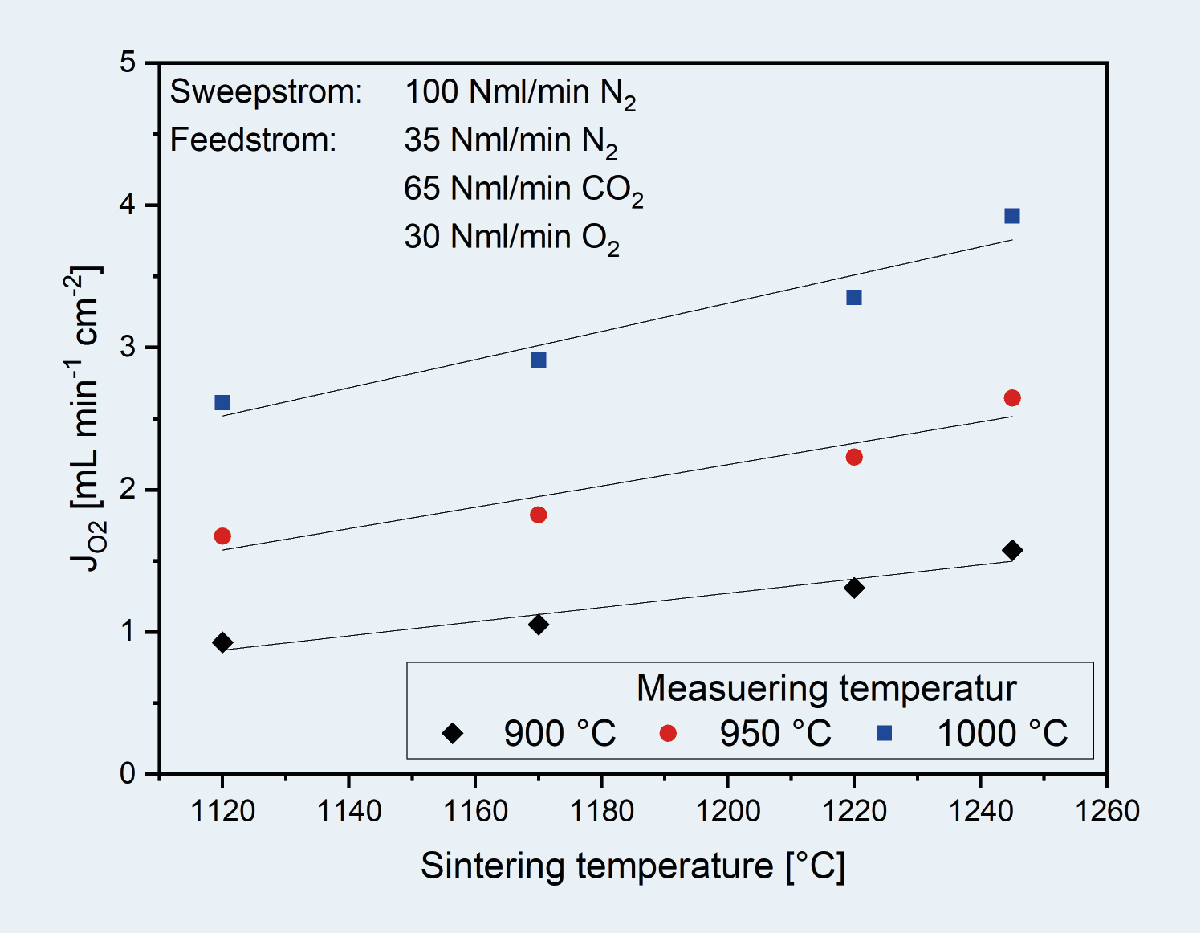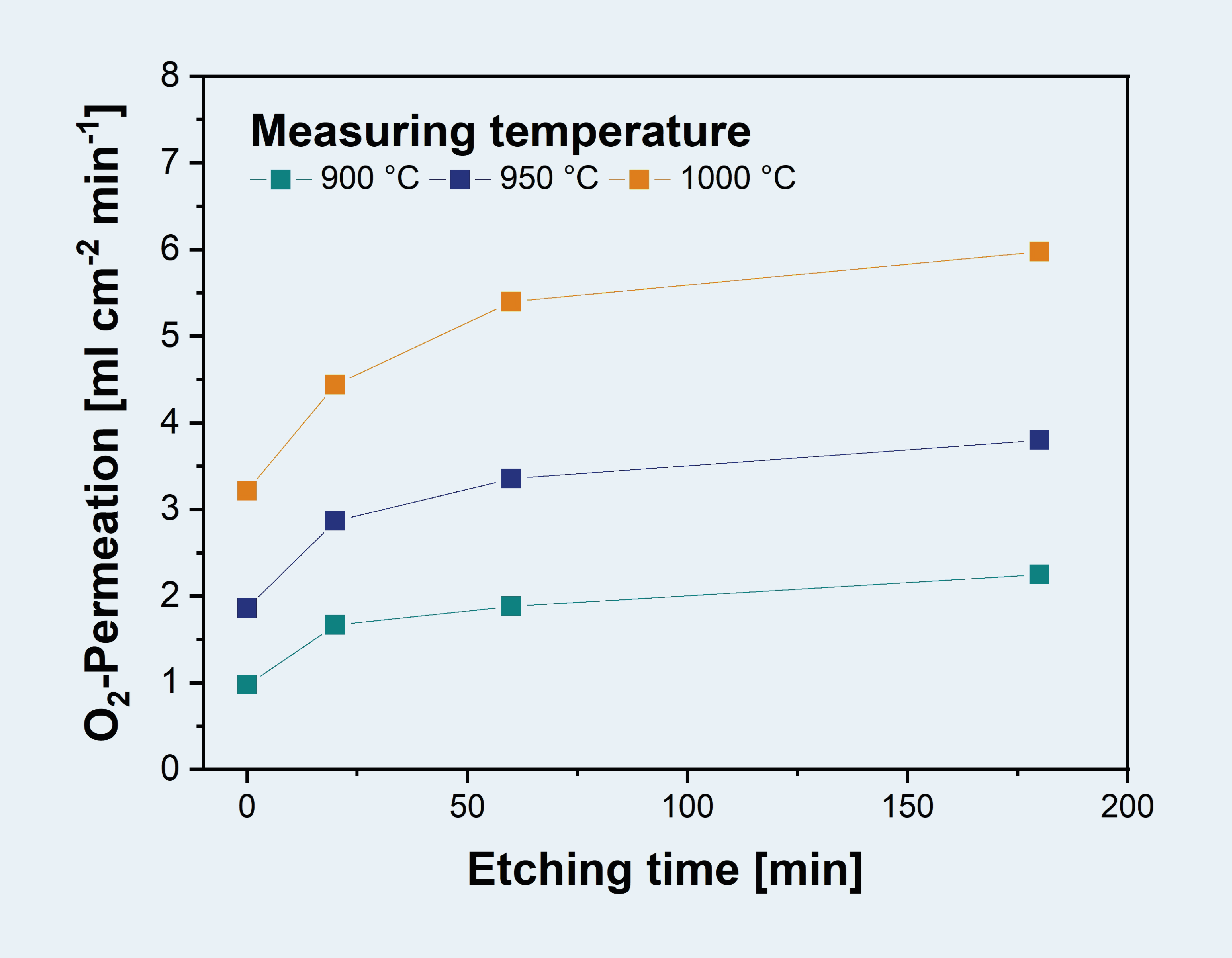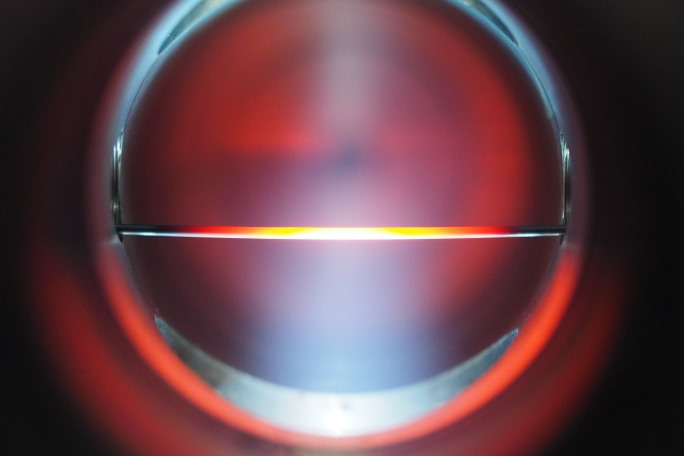Through a cost-efficient and resource-saving combination of plasma and membrane processes, CO2 can be split into O2 and CO, which can be used as a starting product for the synthesis of platform chemicals such as methane, methanol or formaldehyde.
The focus of the work at the IGB is on the development of a suitable membrane which, on the one hand, can efficiently separate oxygen and, on the other hand, can be used in a CO2 plasma. For this purpose, a mixed conducting ceramic material (LawCaxCoyFezO3-δ; LCCF) was selected for the production of the membranes, which has already been described in the literature as CO2-tolerant. Using an established wet-spinning process followed by sintering, gas-tight LCCF capillaries could be reproducibly produced for the first time that are both CO2-stable (> 200 h) and suitable for oxygen separation (O2 permeance of 1.0 ml min-1 cm-2 at 900°C). By optimizing the grain boundaries in the membrane and by roughening the inner and outer surface of the membrane, the oxygen permeance of the membrane could be significantly improved [1, 2]. Furthermore, the capillaries fabricated by Fraunhofer IGB exhibit very good thermal stability and oxygen permeance (2.3 mL min-1 cm-2) in CO2 plasma [3]. Such capillaries have not yet been described in the literature.
Due to the good results, work will be done in the near future to optimize the separation performance by increasing the separation area in the plasma. This is to be achieved by increasing the number of membranes installed. Furthermore, possible reaction partners of the CO, such as H2, are to be introduced directly into the plasma.
 Fraunhofer Institute for Interfacial Engineering and Biotechnology IGB
Fraunhofer Institute for Interfacial Engineering and Biotechnology IGB

